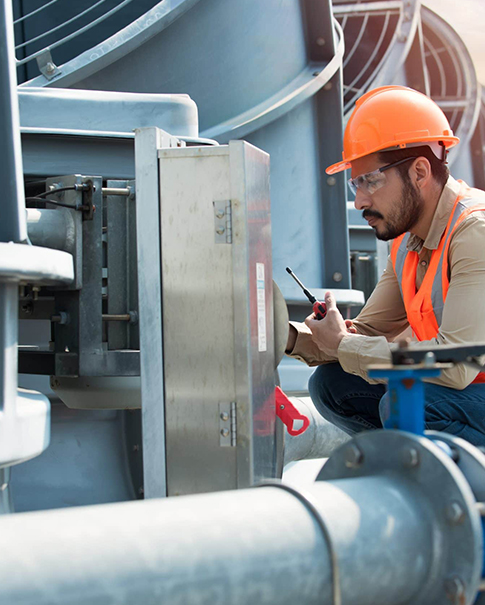How to Maintain and Extend the Life of Your Mold Temperature Controller?
Nov 04, 2025
In the previous article, we already mentioned How To Maintenance The Mold Temperature Controller? Covering fundamental maintenance tips such as cleaning, inspecting electrical components, checking oil/water quality, and ensuring proper circulation.
Building on that foundation, this guide will show you how to extend your mold temperature controller’s life, improve its efficiency, and reduce downtime. Whether you are using an Oil Type Mold Temperature Controller or a Water Type Mold Temperature Controller, following these best practices can save your facility time and money.
Why Proper Maintenance Matters
A Mold Temperature Controller plays a crucial role in precision temperature control for injection molding, extrusion, rubber, and other process manufacturing. A well-maintained controller can run reliably for 7–10 years or more, while neglected equipment may face frequent breakdowns within 1–3 years. Extending your mold temperature controller’s lifespan not only improves production stability but also reduces repair costs, energy consumption, and unplanned downtime.
Core Maintenance Principles for Mold Temperature Controllers
Before exploring advanced lifespan-extension strategies, let's quickly review the core maintenance points from the previous article:
Maintenance Item
Summary
Pipe & filter cleaning
Prevents clogging and ensures efficient circulation
Pump inspection
Reduces noise, vibration, and flow issues
Electrical component check
Prevents short circuits and safety hazards
Temperature monitoring
Maintains stable process parameters
Medium selection (oil/water)
Ensures proper heat transfer and system longevity
Following these steps consistently is the first step to achieving optimal performance.
1. Choose the Right Medium and Maintain It Properly
Selecting the correct medium is essential for Mold Temperature Controller Maintenance:
Water Type Mold Temperature Controller: Suitable for temperatures below 180°C(356˚F). Pay attention to scaling and corrosion.
Oil Type Mold Temperature Controller: Ideal for applications above 200°C(392˚F). Use high-quality thermal oil to prevent oxidation and carbonization.
Note:If you use an oil mold temperature controller, please be aware of carbon build-up inside the heating tubes, as it is a key factor that reduces heating efficiency and shortens equipment life. Over time, high-temperature oil may deteriorate and form carbon deposits, which act as an insulating layer and prevent proper heat transfer. When heat cannot disperse effectively, the heating tubes are forced to work under higher load, increasing energy use and the risk of overheating or tube failure. To avoid this, perform routine checks, replace aged thermal oil in time, and clean the system when needed. This helps keep the heating tubes efficient, safe, and durable.
2. Maintain a Stable Operating Environment
The installation and surrounding environment affect the lifespan of your mold temperature controller:
Avoid humid, dusty, or corrosive conditions.
Ensure proper ventilation and heat dissipation.
Do not place near furnaces, hot mold surfaces, or machine exhaust outlets.
A stable environment reduces stress on pumps, electrical components, and heating elements, helping improve mold temperature controller efficiency over time.
3. Avoid Frequent Heating and Cooling Cycles
Frequent temperature changes accelerate metal fatigue, wear on seals, and electrical stress. To minimize this:
Keep the process temperature as stable as possible.
Gradually adjust temperatures when cooling down or heating up.
Lower the temperature to a safe range before powering off.
By reducing thermal shock, both oil and water type mold temperature controllers can maintain optimal performance longer.
4. Use Genuine Spare Parts and Quality Components
Each component inside a mold temperature controller contributes to the overall stability of the system. Pumps, heating elements, control boards, relays, and sensors are exposed to constant temperature fluctuations and mechanical stress.Low-quality components often lead to chain failures. Choose reliable brands for:
Temperature controllers(For example, Omron, WEST and etc)
Relays(ABB / Fuji Electric / Omron / Siemens / Eaton, etc)
Pumps and motors
Heating tubes
Electrical components (Schneider / Siemens / Eaton / ABB,etc)
While the initial cost may be higher, the long-term benefits include reduced downtime, consistent temperature control, and extended device life.
5. Implement Preventive Maintenance
A structured preventive maintenance schedule is more cost-effective than reactive repairs. Recommended intervals:
Interval
Maintenance Tasks
Weekly
Check leaks, alarms, pump flow, and temperature accuracy
Monthly
Clean filters, inspect pump pressure, check wiring
Semi-annual
Test oil/water quality, calibrate controllers, inspect safety valves
Annual
Full system check, including electrical testing, seal replacement, and pressure testing
Documenting maintenance actions helps identify trends, anticipate failures, and improves the extend mold temperature controller lifespan goal.
6. Train Operators to Avoid Misuse
Many failures are caused by improper operation rather than product defects:
Running dry without circulation
Turning on heating before starting the pump
Operating beyond temperature limits
Providing operator training for proper start-up, shutdown, and emergency procedures ensures safety and reliability, while also protecting your mold temperature controller investment.
7. Troubleshooting and Performance Optimization
Despite careful maintenance, issues may arise. Familiarity with Mold Temperature Controller Troubleshooting techniques is essential:
* Temperature Fluctuations: Check for pump flow issues or sensor misalignment.
* Pump Noise or Vibration: Inspect for air pockets, worn bearings, or blocked filters.
* Heating/Cooling Inefficiency: Assess medium quality, heating element condition, or heat exchanger performance.
* Early troubleshooting prevents minor issues from escalating, keeping production on schedule and maximizing controller lifespan.
Conclusion
Extending the life of your Mold Temperature Controller requires more than routine cleaning—it involves a combination of correct medium use, stable operating environment, preventive maintenance, quality components, operator training, and smart monitoring. By following these strategies:
You extend mold temperature controller lifespan.
You improve mold temperature controller efficiency.
You reduce the need for costly repairs through timely mold temperature controller troubleshooting.
Whether you are using an Oil Type Mold Temperature Controller or a Water Type Mold Temperature Controller, a disciplined maintenance routine ensures your investment continues delivering reliable, precise temperature control for years.
For more detailed guidance, visit our previous article: How to maintenance the mold temperature controller?
